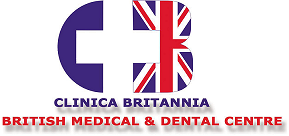Ultrasound for diagnosis of liver disease
Heavy alcohol consumption causes alcoholic liver disease and is a causal factor of many types of liver injuries and concomitant diseases. It is a true systemic disease that may damage the digestive tract, the nervous system, the heart and vascular system, the bone and skeletal muscle system, and the endocrine and immune system, and can lead to cancer. Liver damage in turn, can present as multiple alcoholic liver diseases, including fatty liver, steatohepatitis, fibrosis, alcoholic cirrhosis, and hepatocellular carcinoma, with presence or absence of hepatitis B or C virus infection. There are three scarring types (fibrosis) that are most commonly found in alcoholic liver disease: centrilobular scarring, pericellular fibrosis, and periportal fibrosis. When liver fibrosis progresses, alcoholic cirrhosis occurs. Hepatocellular carcinoma occurs in 5% to 15% of people with alcoholic cirrhosis, but people in whom hepatocellular carcinoma has developed are often co‐infected with hepatitis B or C virus.
Ultrasound is an inexpensive method that has been used for years in clinical practice to diagnose alcoholic cirrhosis.
Diagnosis of cirrhosis by ultrasound, especially in people who have no symptoms, may have its advantages for the prognosis, motivation, and treatment of these people to decrease their alcohol consumption or become abstinent.[:ru]Чрезмерное употребление алкоголя вызывает алкогольную болезнь печени, а также может привести к ряду других сопутствующих заболеваний. Алкоголь может нарушать функции внутренних органов и даже приводить к развитию рака. Повреждения печени, вызванные избыточным употреблением алкоголя, как правило, представлены жировой инфильтрацией печени (накопление жиров в печени), стеатогепатитом (воспаление печени на фоне жировой инфильтрации), фиброзом (фиброзной дегенерацией), алкогольным циррозом (образование рубцовой ткани в печени) и гепатоцеллюлярной карциномой (наиболее распространенный вид рака печени). Прогрессирование фиброза печени приводит к развитию цирроза.
Ультразвуковое исследование (УЗИ) является недорогим методом, который в течение многих лет применяют в клинической практике для диагностики алкогольного цирроза[:es]Ultrasonido para el diagnóstico de enfermedad hepática
El consumo excesivo de alcohol causa hepatopatía alcohólica y puede provocar algunas otras enfermedades concomitantes. El alcohol puede dañar a función de los órganos corporales y puede provocar cáncer. El daño hepático debido al consumo de alcohol excesivo se presenta generalmente como hígado graso (acumulación de grasas en el hígado), esteatohepatitis (inflamación del hígado con acumulación concurrente de grasas en el hígado), fibrosis (degeneración fibrosa), cirrosis alcohólica (cicatrización del hígado) y carcinoma hepatocelular (el tipo más frecuente de cáncer de hígado). Cuando la fibrosis hepática progresa ocurre la cirrosis alcohólica.
La ecografía es un método económico que se ha utilizado durante años en la práctica clínica para diagnosticar la cirrosis alcohólica. El diagnóstico de cirrosis por ultrasonido, especialmente en personas que no tienen síntomas, puede tener sus ventajas para el pronóstico, la motivación y el tratamiento de estas personas para disminuir su consumo de alcohol o volverse abstinente.[:fr]La consommation excessive d’alcool entraîne une atteinte alcoolique du foie et peut conduire à d’autres maladies concomitantes. L’alcool peut détériorer le fonctionnement des organes du corps et peut être la cause de cancer. Les lésions hépatiques, en raison de la consommation excessive d’alcool, se présentent généralement sous la forme de stéatose hépatique (accumulation de graisses dans le foie), de stéatohépatite (inflammation du foie associée à une accumulation de graisses dans le foie), de fibrose (dégénérescence fibreuse), de cirrhose alcoolique (fibrose cicatricielle du foie) et de carcinome hépatocellulaire (forme la plus fréquente de cancer du foie). La cirrhose alcoolique est l’aboutissement de la progression d’une fibrose du foie.
L’échographie est une méthode peu coûteuse qui est utilisée depuis de nombreuses années dans la pratique clinique pour diagnostiquer la cirrhose alcoolique.[:de]
Ultraschall zur Diagnose von Lebererkrankungen.
Übermäßiger Alkoholkonsum verursacht alkoholische Lebererkrankungen und ist ein
ursächlicher Faktor für viele Arten von Leberläsionen und Begleiterkrankungen.
Es ist eine echte systemische Erkrankung, die den Verdauungstrakt, das Nervensystem,
das Herz- und Gefäßsystem, das Knochensystem und die Skelettmuskulatur sowie das endokrine
und das Immunsystem schädigen und Krebs verursachen kann. Leberschäden können wiederum als
multiple alkoholische Lebererkrankungen auftreten, einschließlich Fettleber, Steatohepatitis,
Fibrose, alkoholischer Leberzirrhose und hepatozellulärem Karzinom, wobei Hepatitis B- oder
Hepatitis C-Virusinfektionen vorliegen oder nicht Narbenbildung (Fibrose), die am häufigsten
bei alkoholischen Lebererkrankungen auftritt: zentrolobuläre Narbenbildung, perizelluläre
Fibrose und periportale Fibrose. Bei fortschreitender Leberfibrose tritt eine alkoholische
Zirrhose auf. Hepatozelluläres Karzinom tritt bei 5 bis 15% der Menschen mit alkoholischer
Zirrhose auf, aber Menschen, bei denen ein hepatozelluläres Karzinom aufgetreten ist, werden
häufig mit dem Hepatitis B- oder C-Virus koinfiziert.
Ultraschall ist eine wirtschaftliche Methode, die seit Jahren in der klinischen Praxis zur
Diagnose von alkoholischer Zirrhose eingesetzt wird.
Die Diagnose einer Ultraschallzirrhose, insbesondere bei Menschen ohne Symptome, kann
Vorteile für die Prognose, Motivation und Behandlung dieser Menschen haben, um ihren
Alkoholkonsum zu senken oder abstinent zu werden.
[:]

